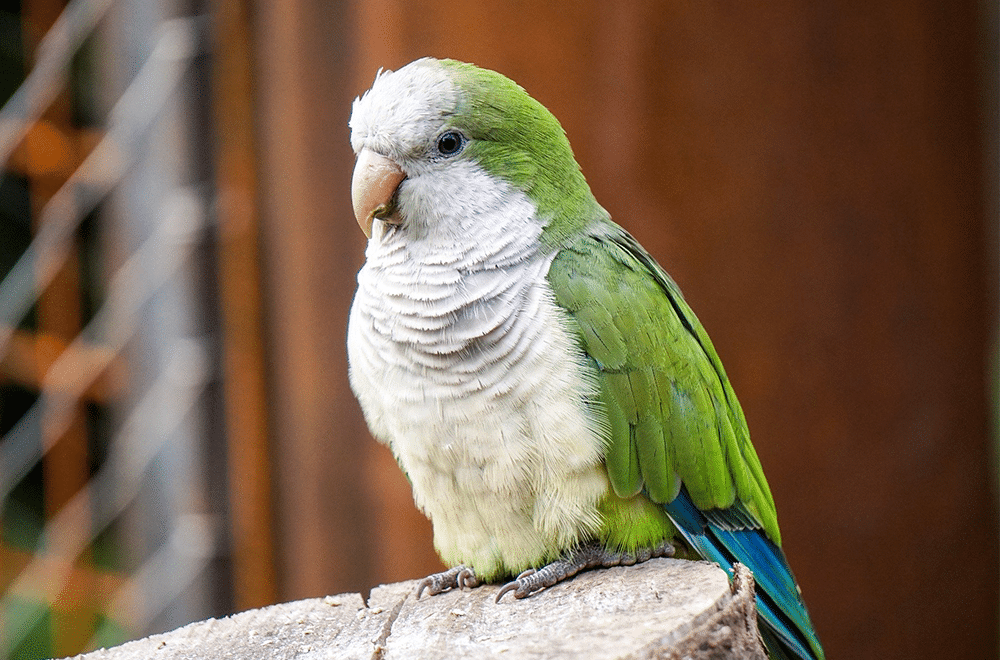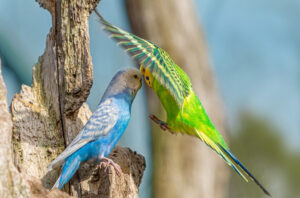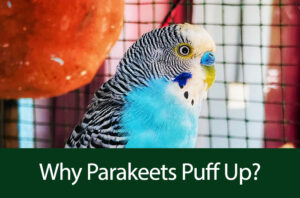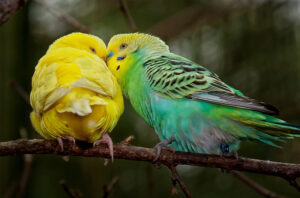The monk parakeet, which is also called the Quaker or clown parrot is well known for its charming, fun-loving, energetic, and comical personalities. Although not everyone can meet the care needs of these tiny birds because of the lots of attention they need, they can, however, make an excellent choice for every bird lover who desires to have all the fun of a large parrot in a smaller package.
The best way, however, to enjoy the best companionship and the fun that these little charming birds offer is when you fully understand them. In this post, we will be highlighting some unique and interesting facts about the monk parakeet, so you can better understand the lovely tiny bird.
There are lots of very attractive parakeets in the world and many of them are well known for their gloriously beautiful plumage. Although relatively small, the monk parakeet no doubt remains one of the prettiest of them all.
Because of the attractiveness of this little bird, it is perfect for a pet, especially for beginner breeders that are still new to sharing their homes with parrots.
Let’s See What These Beautiful Little Birds Really Are
The Monk or Quaker parakeet is native to Argentina and some other South American countries where it lives in subtropical areas.
Because of its availability, outstanding mimicking potentials, and the ability to adapt very well to urban landscapes, these tiny birds have become the most popular parrot of its size in North America and also in Europe.
They are relatively small birds of about 11-12 inches and have a long, pointed tail and fairly narrow wings. Monk parakeets excellently make a great pet while also having the ability to set up large colonies in the wild.
Scientific Classification
- Kingdom – Animalia
- Sub kingdom – Bilateria
- Phylum – Chordata
- Subphylum – Vertebrata
- Class – Aves
- Order – Psittaciformes
- Superfamily – Psittacoidea
- Family – Psittaculidae
- Subfamily – Arinae
- Genus – Myiopsitta
- Scientific name – Myiopsitta Monachus
Quick Information
- Other names: Quaker parrot, monk parrot, Quaker parakeet, monk parakeet, gray-breasted parakeet, green parakeet, Montevideo parakeet
- Life span: 20 – 30 years in captivity
- Size: The monk parakeet sizes range from 11-12 inches.
- Wingspan: 7.5 – 8.5 inches [18.9 – 22 cm]
- Weight: 220 – 260g
- Color: The normal colors of an adult monk parakeet are a vivid green on the head, wings, and back. The bird’s most distinguishing feature is the gray breast, cheeks, and throat which resembles Colonial-era Quaker clothing.
Interesting Facts about the Monk Parakeet
- A monk parakeet is recognizable by its grey head and breast, as well as the absence of other prominent patches of color on the head.
- It is the only parrot that builds stick nest on man-made structures on in a tree, rather than living in a hole on a tree. They often contain multiple pairs with each pair having its separate nesting chamber.
- They are noisy social birds that are always seen in groups.
- Monk parakeets can live for a long time – between 20 and 30 years. And in situations where they enjoyed quality care, some of them can live for more than 30 years.
- Monk parakeets are excellent talkers as they are well known for their exceptional ability to mimic human speech.
- These little birds are relatively small weighing just around 3 to 5 ounces and about 11 to 12 inches long.
- They can become overweight if their diet is not closely monitored. They need a varied diet to live healthily.
- Outlawed in some cities and states because of their amazing talking ability and sometimes because they are seen as pests.
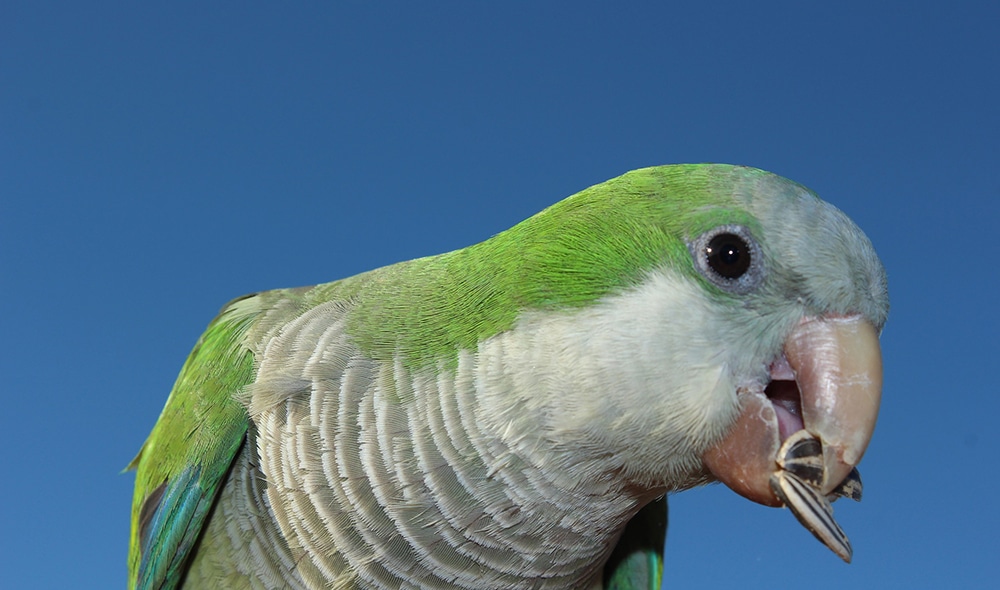
Monk Parakeet Varieties
There are quite a few varieties of the monk parakeet with some of them having quite lovely names. Below is a list of some of the varieties and colors of Quaker parakeets that we have. And all of them make lively and wonderful little pets.
The blue monk parakeet: this variety first appeared back in the 40s, and their color blue is truly beautiful. For a monk parakeet to have this color, both parents must be carrying the gene.
Lutino monk parakeet: this variety usually appears somewhat yellow because of a lack of melanin to mix the “blue” color. This lovely variety first in the US around 1996 and both parents also need to have the mutation before their young can also be a lutino monk parakeet.
Parblue monk parakeet: this variety is also a very lovely one. The amount of blue or green you see on their plumage is determined by how much psittacin they produce.
Cinnamon monk parakeet: this first came into seen in Europe in the 1980s and it is a product of mutation to the natural colors of a parakeet.
Pallid monk parakeet: these have a little blue color plumage in their plumage because of a little production of melanin – more than what is seen in Lutino monks. And so, most of them are usually birds with gorgeous green/yellow colors.
Grey-green monk parakeet: this is considered one of the more popular varieties around. They first appeared in Florida and have their structural color to be darker.
Fallow monk parakeet: these are very similar to the Cinnamon Quakers with red eyes. They first came into the scene in 1996 in America. But since then, it has been pretty difficult for breeders to replicate that mutation.
The Monk Parakeet’s Diet
Quaker parakeets are very good eaters and so require a varied diet to live healthily. They need a mix of fruits, vegetables, and nuts just as they eat it in the wild. They enjoy and grow well on fresh fruits and veggies, nuts, leafy greens, and healthy table food. Peppers, root vegetables, and colorful produce are also vital in their diets.
Some monk parakeets become overweight when allowed to indulge in too many seed treats and fattening nuts like peanuts, sunflower seeds, and millet. Therefore, to make sure that doesn’t happen, ensure to provide your little pet with fresh greens, pasta, legumes, and other veggies as the major food source.
As it is with every other parrot, also ensure they always have fresh water available for them. Also, avoid giving them some foods like chocolate, avocado, and coffee because these foods are considered toxic for birds.
Nesting
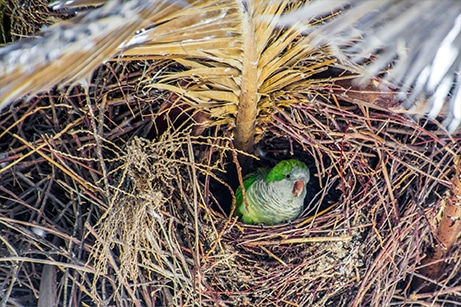
When building their nests, the monk parakeets are usually seen equipped with determination, attitude, intelligence, and desire to make and keep a home. Their nest is not just another regular bird nest. They are made from sticks with many chambers built into them. Each chamber houses a single pair of roosting and breeding. When you think of a monk parakeet’s nest, think of an apartment building that belongs to humans.
While most cages for monk parakeets are usually not large enough to build a big avian apartment building, these birds still try to bring something up. This is one fact that still amazes most people about monk parakeets. People don’t believe that these birds also exhibit building ability even when they found themselves in a domestic environment.
Also, like some other creatures, monk parakeets can also sometimes be extremely territorial of their nests. Most owners do complain that their gentle and lovely little pet does attack them whenever they are trying to retrieve them from within the cage.
However, not all monk parakeets are territorial around their cages but it is something that can be found in some of them. In the bid to protect their nests, monk parakeets can also be seen “borrowing” items from wherever.
Health and Common Conditions
The most common health problems with these birds are feather destruction behaviors, including behaviors like plucking out their feathers as well as a fatty liver disease that is usually caused by a high-fat diet, especially a seed-based diet. That is why it is important to follow after giving your monk parakeet a mix of fresh fruits, vegetables, and other healthy table foods as earlier discussed.
Also, you should know that it is quite easy for birds to hide symptoms of illness (that is their way of warding off predators when they are sick in the wild). So make sure you pay close attention to your birds and identify when something is wrong. Below, a few tips:
- Learn to be a medical detective and always take out time to examine your bird regularly
- Visit the Avian Vet if you notice any sudden change for a thorough examination
- Any cough, favoring a wing or leg, discharge from eyes, blood in droppings, changes in droppings, plucking of feathers can be signs of illness, don’t neglect them.
- You may need to take your bird to see the vet when your bird starts sitting on the bottom of the cage, not singing as usual, playing, pooping, eating, or having any unusual change in behavior.
Visit how to take care of a budgie to learn more.
Monk Parakeets as Pets
The monk parakeets are highly intelligent, social birds. When kept as pets, they easily learn human speech by mimicking. Because of this speaking ability, they have grown in popularity and quickly overtaking the cockatiel as the favorite bird to teach to talk.
Did You Know Monk Parakeets Are Illegal In Some Regions?
Yes, not all states legally allow you to own a monk parakeet. Because these birds are sometimes perceived as pests due to their love for seeds, nuts, and leafy veggies, they have been outlawed in some regions.
These birds multiply quickly, they lay 5-12 eggs, and they hatch in less than 24 hours. A breeding pair can produce as much as 8 clutches in a year. They are considered to be agricultural threats devouring pears, corn, peaches, apples, cherries, and grapes.
In New York, you can own a monk parakeet with registration and banding. States like Ohio don’t allow you to own or breed one unless you can clip their feathers and prevent them from a free flight.
Breeding Monk Parakeets
Monk parakeets are easy to breed, and so they make an excellent choice for beginner breeders. Housing 3 or 4 pairs together seems to work for most breeders. However, it is recommended that you have an equal number of males and females.
These birds obviously do better in an aviary environment because they require lots of space and plenty of shrubbery. Nevertheless, some breeders have recorded some success using ordinary nest boxes and cages. Monk parakeets prefer to build their own large nests using sticks, grasses, shredded paper, and every other things.
They usually produce two clutches of 4 to 8 babies a year, and the young usually leave the nest after about 6 weeks.
Monk parakeets in wildness
These little creatures enjoys the wild life more. In places like the US, Quakers are found in urban and suburban settings, where they feed on ornamental fruit trees and often build stick nests on trees and human structures like power transformers.
They enjoy a social life and you will always see them staying together around their nests. Even in the wild, monk parakeets express different territorial behaviors which is also one of the things that help them survive in their environments.
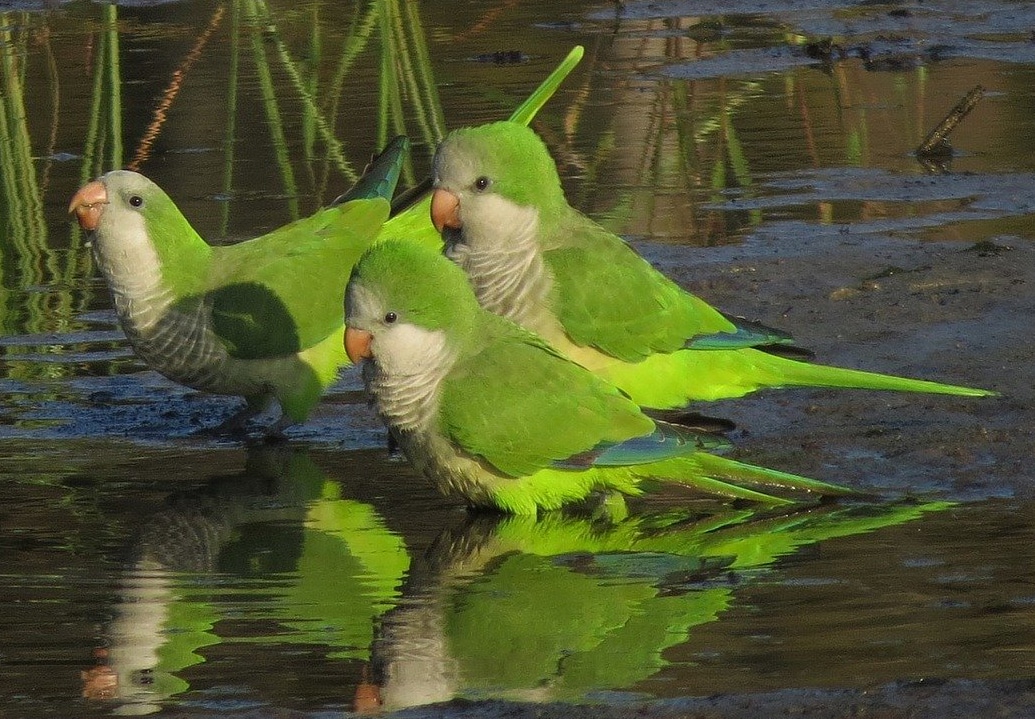
How much does a Monk Parakeet cost?
The Monk Parakeet, also known as Quaker Parrot on average cost 400$. The cost may vary depending on the color mutations.
Monk Parakeet for adoption
Are you looking to adopt a Monk Parakeet? Check out Search & Adopt pets, it’s a nice tool to find a parakeet (or parakeets?) nearby ready to be adopted & loved.
Similar Bird Species
Would you be interested in learning about some other species of birds similar to monk parakeets? Or are you considering finding a pet with characteristics like the Quaker’s, you might consider the Alexandrine Parrot.
However, remember it is very important you give your small parrot all the care it deserves. You can check out How to take care of a budgie to start off on a good foot.

